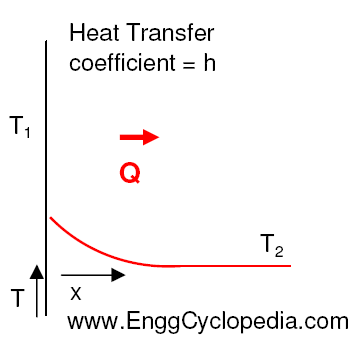Heat transfer by convection generally occurs between a fluid and a solid surface and convective heat transfer is accompanied by motion of the fluid. This is the most general description of convective heat transfer. The type of fluid, direction of heat transfer, nature of fluid motion, time dependence of the heat transfer are some factors which can give us a range of different heat transfer scenarios. The fluid could be either liquid, gas or both. Heat transfer could occur from solid to the fluid or the other way round. The fluid motion could be caused purely by density differences, which is known as 'natural convection heat transfer' or it could be caused by other mechanical devices such as fans, which is known as 'forced convection heat transfer'.

The steady state convective heat transfer can be mathematically captured by following equation,
Q = h×A×(T1 - T2)
where Q : heat transfer rate in Joules/hr
A : Effective heat transfer area of the solid surface in m2
T1 & T2 : Steady state temperatures of solid and fluid bodies respectively in 0C
h : Heat transfer coefficient in Joule/(0C×m2)
The heat transfer coefficient (h) for convection depends on a number of factors such as,
- Fluid-solid combination
- Geometry of the solid surface
- Temperature range of fluid and solid
- Convective velocity of the fluid phase
- Heat transfer coefficient may usually vary with the position along the solid surface and an average has to be taken over the complete area for use in above equation.
Calculation of heat transfer coefficient
Heat transfer coefficients are a measure of the rate at which heat is transferred between a fluid and a solid surface. It is the proportionality constant between the heat flux and driving force for the heat transfer which is a temperature difference. Check sample problems to understand the calculation of the heat transfer coefficient in various cases.





